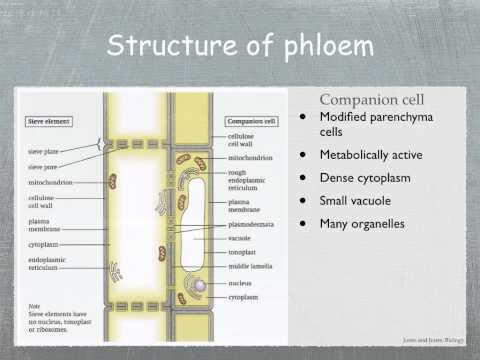Structure Of Phloem Cells – Agriculture Notes – For W.B.C.S. Examination.
ফ্লোএম সেলগুলির কাঠামো – কৃষি নোট – WBCS পরীক্ষা।
The translocation of molecules via the phloem pathway is dependent on the functioning of specialized cells that are distributed in an organized manner throughout the plant.Continue Reading Structure Of Phloem Cells – Agriculture Notes – For W.B.C.S. Examination.
The cells that conduct nutrients over long distances are called sieve elements, of which there are two types: sieve cells, which are found in gymnosperms (e.g., conifers and cycads), and sieve-tube members, which are found in angiosperms (i.e., monocots and dicots). Sieve elements are narrow, elongated cells that are aligned in long columns that extend from source to sink regions within the plant. Sieve elements are living cells and thus possess a plasma membrane at their periphery, just inside the cell wall.
However, they do not contain a nucleus at full maturity, and possess only a few cellularorganelles (e.g., mitochondria , endoplasmic reticulum ). The lack of a nucleus and most other cellular structures means that the cell interior is rather open. This serves to make sieve elements good conduits for long-distance solution flow.
The term sieve in the various names refers to the clusters of pores, or sieve areas, that perforate the common cell walls between adjoining sieve elements and which interconnect these cells. The interconnection is possible because the plasma membrane of each sieve element is extended as a tube through each sieve pore. In sieve cells, the pores are narrow and the structure of the sieve areas is fairly uniform on all walls of the cell. Sieve cells are usually arranged with long, tapering, overlapping ends, and most of the sieve areas are concentrated on these overlapping regions. In sieve-tube members, narrow-pored sieve areas exist, but some walls also possess much larger pores.
The areas with larger pores are called sieve plates, and are usually located on the end walls. These end walls tend to be less obliquely oriented than the ends of sieve cells, and in many species can be situated almost perpendicular to the long, side walls. Sieve-tube members are organized end-to-end in columns of cells called sieve tubes, thus forming a long tubular network throughout the plant. Their larger end-wall pores means that the phloem sap can be more readily translocated over long distances.
The cell walls of sieve elements are considered primary walls, as they are composed chiefly of cellulose. The pores of the sieve areas and sieve plates are additionally lined with a substance called callose, which is a polysaccharide consisting of glucose units. The role of callose in the vicinity of pores is to act as a sealing agent in the case of injury to the phloem pathway. When a plant structure is damaged by mechanical stress, such as wind, or by biological attack, such as feeding by an insect, the plant could lose nutrients if these were to “bleed” from the cut end of the sieve elements. This usually does not happen, because following injury callose is rapidly deposited within the wall region of sieve pores. This deposition constricts the interconnecting tube of plasma membrane and thereby blocks the pore. With time, the plant can generate new sieve elements around the cut area to reestablish translocation within that column of phloem cells.
As mentioned earlier, sieve elements do not contain a nucleus in their mature state, yet in some species sieve elements are known to live for decades. How is this possible? Sieve elements are always found to be associated with specialized accessory cells that contain all the components commonly found in living plant cells, including a nucleus. For sieve-tube members, these specialized cells are called companion cells, and the specialized association is referred to as the sieve element-companion cell complex. Companion cells are very densely filled with organelles, and thus they are not structurally suited for the long-distance translocation of nutrients. Functionally, however, companion cells are extremely important, as they are responsible for the coordinated movement of molecules into and out of the sieve-tube members. These molecules include not only substances translocated throughout the plant, but also proteins and nucleic acids that are needed to maintain the life and functions of the sieve-tube member.
The movement of these molecules occurs through elaborate channels called plasmodesmata that interconnect companion cells and sieve-tube members. Less specialized plasmodesmata also exist between certain other cell types. Although very important, the movement of molecules through plasmodesmata is poorly understood, and scientists are currently focusing much attention on this area of plant biology.
Accessory cells are also found associated with the sieve cells of gymnosperms, where they are called albuminous cells. The albuminous cells are structurally comparable to and perform a role similar to that of companion cells.
Please subscribe here to get all future updates on this post/page/category/website


 +919674493673
+919674493673  mailus@wbcsmadeeasy.in
mailus@wbcsmadeeasy.in







































































































